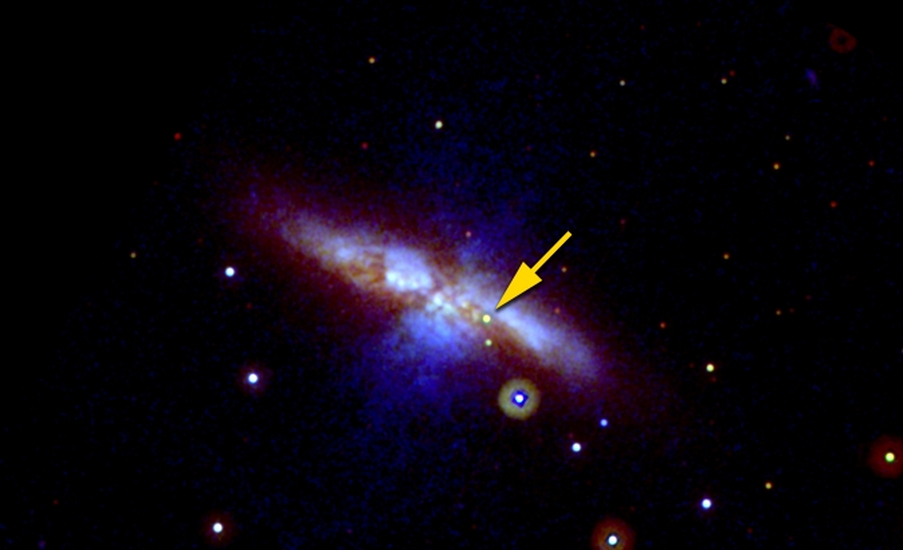
 Credit: NASA/Swift/P. Brown, TAMU
Credit: NASA/Swift/P. Brown, TAMU
SN2014J
A nearby supernova is something to get excited about. And on January 21, 2014, the astronomical world was abuzz with the discovery of a Type Ia supernova, the deflagration of a compact white dwarf star in the nearby galaxy M82. This explosion, now known as SN2014J, was serendipitously discovered by astronomer Steve Fossey and his astronomy class during a teaching session at the University of London Observatory. Its location in M82, about 12 million lightyears distant, makes it one of the nearest supernovae of any type in about a decade, and the nearest Type Ia supernova in modern history. This is especially important, since Type Ia supernovae are regarded as "standard candles", useful for determining distances to the edge of the Universe, and instrumental in the discovery of Dark Energy, the surprising force which accelerates the expansion of the Universe. This event represents a rare opportunity and is currently being studied by observatories around the world as well as NASA's fleet of space-based facilities, including the Hubble Space Telescope, the Chandra X-ray Observatory, Swift, the Fermi Gamma-ray Space Telescope, and NuSTAR. The image above is an early observation of the supernova taken on January 22 by Swift's Ultraviolet and Optical Telescope. Mid-ultraviolet light is shown in blue, near-UV light in green, and visible light in red, while the arrow marks the location of SN 2014J.
Published: February 3, 2014
<
HEA Dictionary ● Archive
● Search HEAPOW
● Other Languages
● HEAPOW on Facebook
● Download all Images
● Education ● HEAD
>

Each week the HEASARC
brings you new, exciting and beautiful images from X-ray and Gamma ray
astronomy. Check back each week and be sure to check out the HEAPOW archive!
Page Author: Dr. Michael F. Corcoran
Last modified Tuesday, 27-Feb-2024 10:15:22 EST


